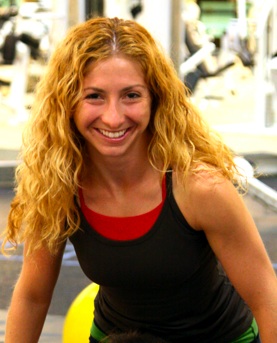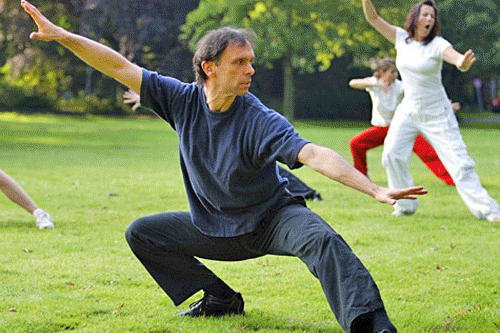 |
 |
There
are innumerable protein products on the market, varying in terms of brand and
price. But did you know that protein itself comes in a number of different
forms? Depending on what you wish to achieve in terms of fitness and
bodybuilding, some types of protein, and thus, protein powder, may be better
for your purposes than others. Here are some of the common types of proteins
and how they benefit your body:
Whey protein makes up 20% of total
milk protein. Whey is recognized for its excellent amino acid profile, high
cysteine content, rapid absorption, and variety of peptides. Since it is very
quickly digested, the best time to consume it is within 6 hours following a
workout, prior to a workout or at breakfast.
Casein protein makes up 80% of total
milk protein. It's recognized for its excellent amino acid profile, slow
digestion and variety of peptides. Since casein is slowly digested, don't use
it during or after workouts - you need a faster absorbing protein during these
times. The best time to consume casein protein is anytime of the day except
breakfast and within 6 hours following a workout when your body needs a more
immediate source.
Soy protein is a complete protein
that is generally very low in or free of fat, cholesterol and lactose. It is
ideal for high protein/low carb diets. Its valuable constituents include
saponins, phytosterols, and isoflavones. The anabolic isoflavones in soy
(genistein and daidzein) have exhibited effects as powerful antioxidants and
have shown a number of health benefits for both men and women. For
weightlifting/bodybuilding purposes, many choose to mix soy protein powder with
some type of whey supplement, so they see the benefits of both rapidly
digestible proteins and their amino acid make-up.
Whey hydrolysates -- also called
peptides, are powerful proteins that are the quickest to absorb since your body
prefers peptides to whole proteins. Hydrolysates are potentially the most
anabolic for short-term protein synthesis and can be used 15 minutes prior,
during, and immediately after a workout.
Protein blends are a combination of
several types of protein such as whey protein concentrate, whey protein
isolate, egg protein, casein protein, and soy protein. With a blend, you
receive the full spectrum of proteins with varying rates of absorption. Using a
blend will create an anabolic environment from the whey and an anti-catabolic environment
from the casein. Consume protein blends outside of the 6 hour post-workout
window.
|
|
 |
 |
 Young
people who engage in sports and exercise tend to stay active throughout their
lives. That's why it's so important that you encourage your 13- to 18-year-old
to participate in physical activities - either alone or with a group. Such
things will keep them active, boost their self-confidence, provide
opportunities for social interaction, and offer them a chance to have fun.
Physical activity tends to decline during the teen years. Studies show that
teens on average spend more than 6 hours a day on various media, including
watching TV, listening to music, surfing online, and playing video games. It's
not surprising that teens can't seem to find the time to exercise and many
parents can't motivate them to be active.
Given the opportunity and interest, teens can reap health benefits from almost
any activity they enjoy - skateboarding, rollerblading, yoga, swimming,
dancing, or kicking a hacky-sack around in the driveway. Whatever they
choose to do, it's recommended that teens get at least 1 hour of physical
activity on most, if not all, days of the week.
Encourage your teenager to work physical activity into their daily routine,
whether that means walking to school, doing labor-intensive chores around the
house or yard, or finding an active part-time job. They can be camp counselors,
restaurant servers, or assistant coaches for youth sports teams - any job that
comes with a chance to be active will both keep your teen on their feet and
teach them a little about financial responsibility in the process.
Parents should try to give teens control over how they decide to be physically
active. Teenagers are in the process defining themselves as individuals and
want the power to make their own decisions. As a parent, it's important that
you emphasize that it's not what they do; they just need to be physically
active on a regular basis.
Once they get started, many teens enjoy the feeling of reduced stress and
increased strength and energy they get from exercise. This feeling will
hopefully make them want to continue exercising without nudging from a parent.
|
|
 |
 |
|
 Who says working out
has to mean riding a stationary bike or attending your run-of-the-mill aerobics
class? In an effort to find new, innovative, and fun ways to stay physically
fit, folks everywhere are unearthing some fitness trends that combine both
working out and learning a new skill, such as dancing or hoola hooping. The
following are some trends that, however new to the fitness scene, are pulling
in massive interest from people who are a bit bored with the traditional
methods of working out. Who says working out
has to mean riding a stationary bike or attending your run-of-the-mill aerobics
class? In an effort to find new, innovative, and fun ways to stay physically
fit, folks everywhere are unearthing some fitness trends that combine both
working out and learning a new skill, such as dancing or hoola hooping. The
following are some trends that, however new to the fitness scene, are pulling
in massive interest from people who are a bit bored with the traditional
methods of working out.
Hula Hooping
Hula hooping is loads of fun, makes for a fabulous core workout, and is a a
great way to impress your friends at parties or musical gatherings!
Cardio-Salsa
Salsa dancing, by its very nature, can be an intense cardiovascular activity.
But when you put the focus on salsa as a means of becoming physically fit,
you'd be hard-pressed to name a more intense cardio workout. Not to mention,
salsa dancing is a fun and impressive talent to cultivate! By day, use salsa as
a workout, and by night, take your skills to the dance clubs!
Boxing/Cycling/Stretcing
Indoor boxing-style classes, as well as spinning/cycling and stretching/flexibility
programs are at the top of the fitness hotlist right now. Kickboxing is a great
cardio workout and a massive reliever of stress, while spinning allows you to
adjust your cycling pace while following the visual guides of the instructor as
if you were on a real cycling course.
Mindful Wellness
Yoga, Tai Chi & other martial arts, ethnic dance forms, relaxation programs
and exercise with visualization or meditation components are options for people
who wish to connect the physical with the spiritual.
Adventure Vacations/Weekend Warriors
Day-long or weekend excursions filled with kayaking, hiking, rock climbing,
wind-surfing...you name it... Outdoor recreational activities are becoming more
popular - especially among babyboomers - in the realm of fitness. What better
way to get exercise, have a blast, and commune with the Great Outdoors than a
recreational adventure?
|
|
 |
 |
Whether
you're planning a family whitewater rafting trip or you're going on a weekend
hiking excursion with a friend, there are many ways to make sure your
experience is fun and safe. Consider the following safety tips the next time
you embark on a recreational adventure:
- Always let family or friends back at home know where you're going, what you'll
be doing, and how long you'll be gone.
- Make sure you have knowledge of the area, weather, terrain, wildlife, and the
limitations of your body.
- Always travel with a companion. You don't want to be by yourself in case of an
emergency.
- Wear appropriate clothing for the season and prepare for unpredictable
weather/terrain conditions.
- When hiking near cliffs, stay on developed trails or dry, solid rock areas
with good footing.
- Inspect your equipment to make sure everything is in good working order before
you leave.
- Learn basic first aid and carry a first aid kit with you. Learn to identify
symptoms of heat stroke, heat exhaustion, dehydration, and hypothermia, and how
to treat them.
- Pack your own water, or purify water through chemical treatment. No matter how
clean and pure water may look, it could still be filled with parasites and
illness-causing micro-organisms.
- Make sure you're in good physical condition for the degree of strenuousness
your adventure will present. If you'll be climbing in high altitudes, make
plans for proper acclimatization.
- Take safety precautions that are specific to the activities you'll be doing.
If you're inexperienced, make sure you have an experienced guide, or get the
proper instruction before you go.
|
|
 |
|
|
|
 |
|
In This Issue:
|
|
 |
|
Training Updates
|
Your Name

800-123-4567
my website
|

|
|
Good Shoes - Types of Fitness Shoes
|
|
Do
you ever wonder why there so many types of athletic shoes out there? It can be
overwhelming to walk into the shoe store and see the walls of options divided
into numerous categories. Why is it that each sport seems to require a
different type of shoe? The answer is simple: because different shoes offer
varying degrees of support in order to ensure comfort, performance, and safety
when engaging in a specific activity.
You should feel nothing short of comfortable in the shoes you wear, especially
when you're running, working out, or playing a sport. For example, if you're a
basketball player, you know that basketball requires a lot of running and
jumping. In that case, you should definitely get a pair of shoes that have a
strong grip to prevent you from slipping and falling. Also, you'll want your
basketball shoes to provide the kind of leverage you'll need for jumping. The
same goes with soccer and golf shoes - when you're on the field or the green,
you'll need a good pair of cleats.
There are a number of reputable brands out there that offer specialized
athletic shoes. There are many generic brands as well, but remember, as with
anything - you get what you pay for. Shoes are not really the area where you
want to sell yourself short as they can make or break your ability to be
comfortable, and thus, perform well and with minimal risk of injury.
So the next time you're shopping for athletic shoes, whether they are hiking
shoes, running shoes, or tennis shoes, pay attention to those categories in
your favorite athletic shoe store. Don't just buy the walking shoes because
they look nice, when you're going to be playing basketball in them. If you're
unsure about all the types of shoes and the shoe terminology that you'll no
doubt encounter, simply ask a salesperson to measure your feet and make
recommendations based on your needs.
|

|
|
What is Circuit Training?
|
Maybe
you've seen advertisements for gyms that offer circuit training. If you're
unfamiliar with the concept, circuit training is a type of interval training in
which strength exercises (usually in the form of resistance or hydraulic
machines) are combined with endurance/aerobic exercises in order to harness the
benefits of both cardiovascular and weight training. You typically spend
anywhere from 30 seconds to one minute on a machine before moving to the next
station, where you'll perform an aerobic exercise (i.e., a step platform).
You'll repeat the process of alternating from machine to aerobics until you've
completed the full circuit without stopping. A typical 12 station circuit will
take approximately half an hour to complete, although there are a number of
variations. Most circuit training gyms have music, a voice, or a beep to signal
when it's time for you to switch stations. Circuit training is a great way to
get anaerobic exercise - combining strength and cardio training - especially if
you're short on time. 
|

|
|
When Do You Workout?
|
Does it matter what time of day you workout? Some people
contend that morning workouts are the best, while others swear by working out
in the evenings. Ultimately, there's no right or wrong time to work out. It all
depends on you. The best time for you to work out is when you're most likely to
do it and it still be effective. If you have to drag yourself to the gym after
work when you'd rather be going home, you're already not in the right frame of
mind to engage in an effective workout. However, some people get into that
active mentality after a few minutes of warming up.
On the other hand, many people swear by morning workouts because they can get
you energized, setting a positive tone for the rest of the day. Some people
also like to get their workouts out of the way, which is why they go first
thing in the morning. The bottom line is this: workout when you have time and
are fully alert (as to not cause any injuries). If that time just happens to be
at 3:00 in the morning, that's fine - luckily, there are 24 hour gyms!
|
|
 |
